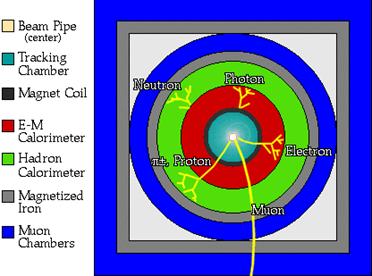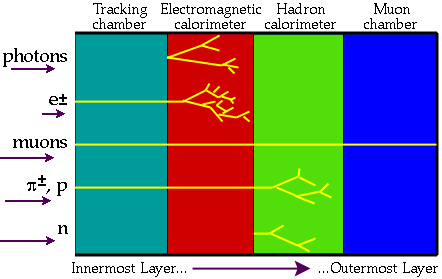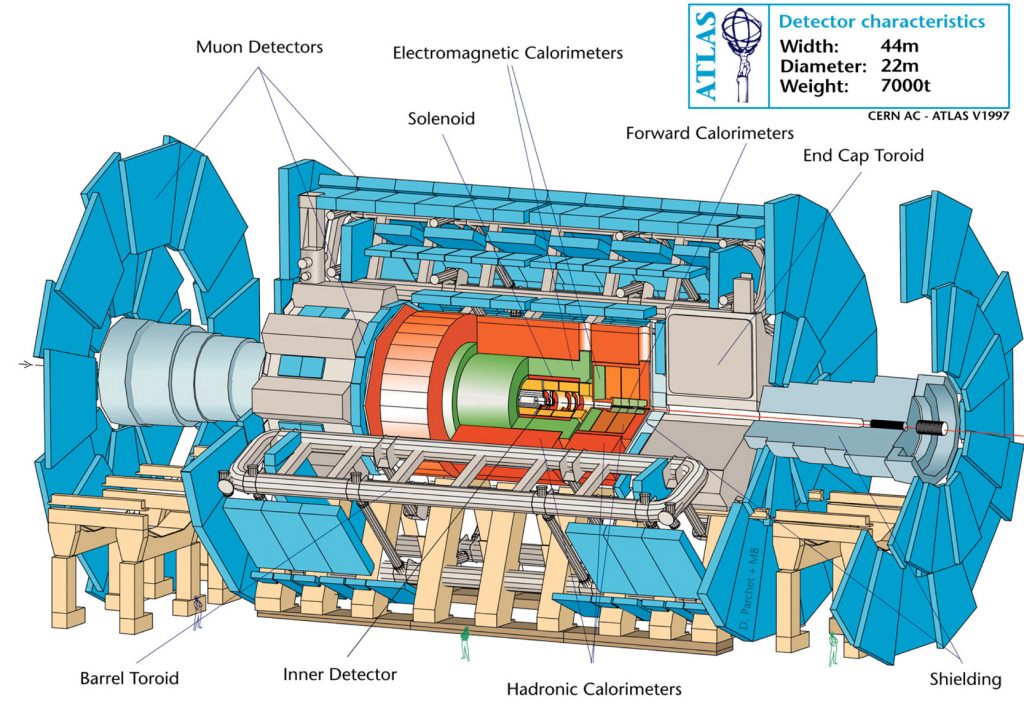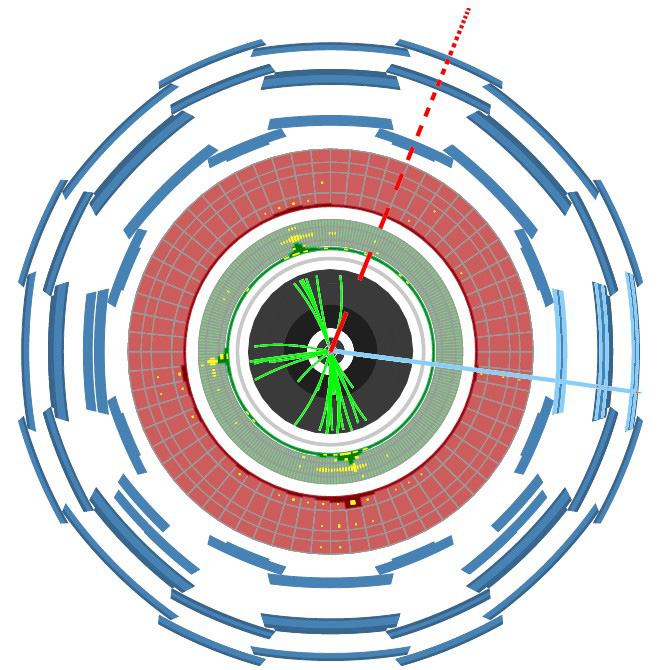Detecting Particles

The beam pipe is a long pipe with small cross section in which the particles travel. Depending on the type of experiment being executed, the particles can either enter from both sides of the beam pipe (into the picture and out of the picture), or travel from one side to the other, aiming at a fixed target.
The tracking chamber records particle tracks to a large system of computers.
The magnetic coil creates a magnetic field in the tracking chamber such that the charged particle tracks may bend in certain directions enabling physicists to determine the charge of a particle. This coil also allows for physicists to measure the momenta of the particles passing through.
These particles deposit on the E-M and Hadron Calorimeters. The special materials the calorimeters are made of. Physicists can determine the identity of the particle created after the initial collision by analyzing how far into a layer of the calorimeters a particle travels. If a particle stops at a layer in the E-M calorimeter then it is known that the particle is electromagnetic, an electron or a photon, for example. If it continues further into the Hadron calorimeter, the particle then must be a hadron, such as a proton or a neutron.
If the particles do not stop at either of these layers of the detector and continue through the Magnetized Iron, the particles must then be muons. Physicists know this because muons can penetrate just about everything. In fact, muons are passing through us right now, because they are cosmic particles as well (coming from the sky).
Thus, the Muon Chamber, record the number of particles (or muons) that travel through.



This is incredibly important, however the LHCb experiment is very different! It has a different design due to the underlying fundamental physics of the special particles.
Check out the other links on the menu to the left to explore more about the LHCb experiment!
(Images: Courtesy of CERN and Particle Adventure)
